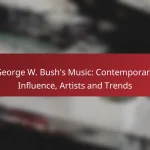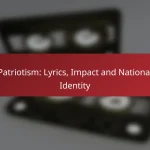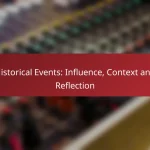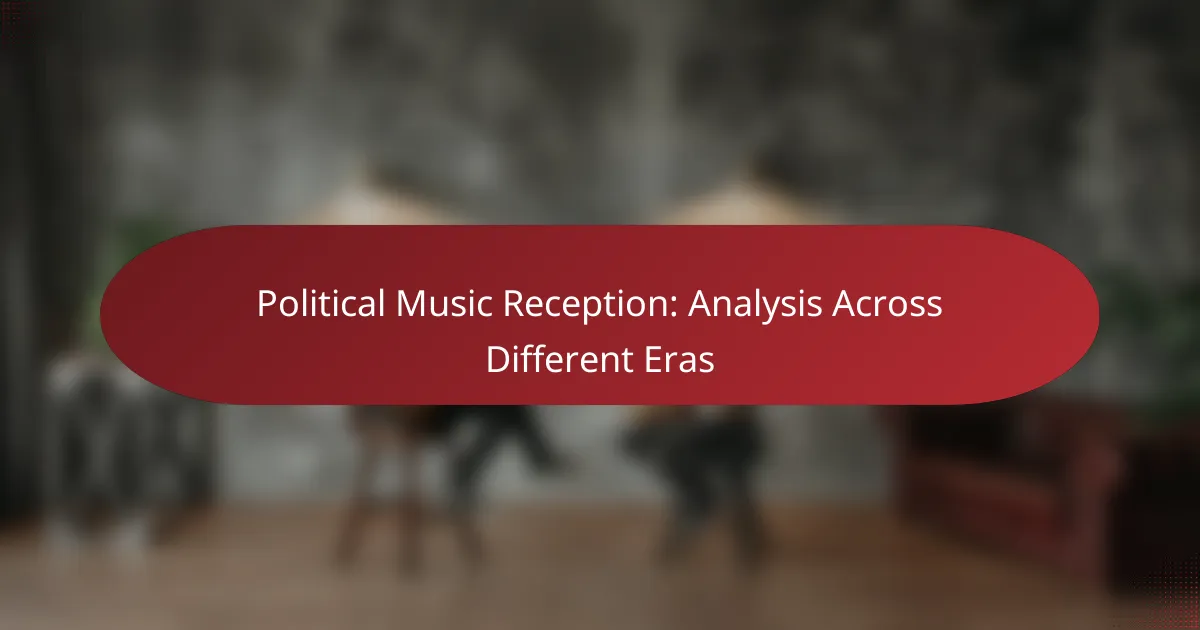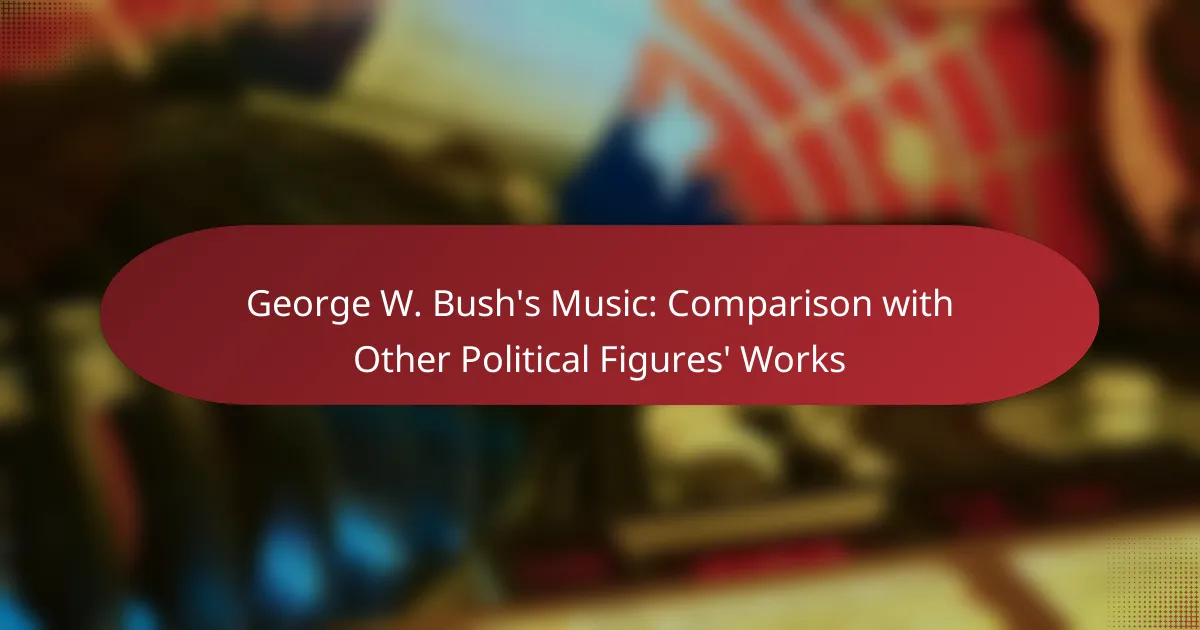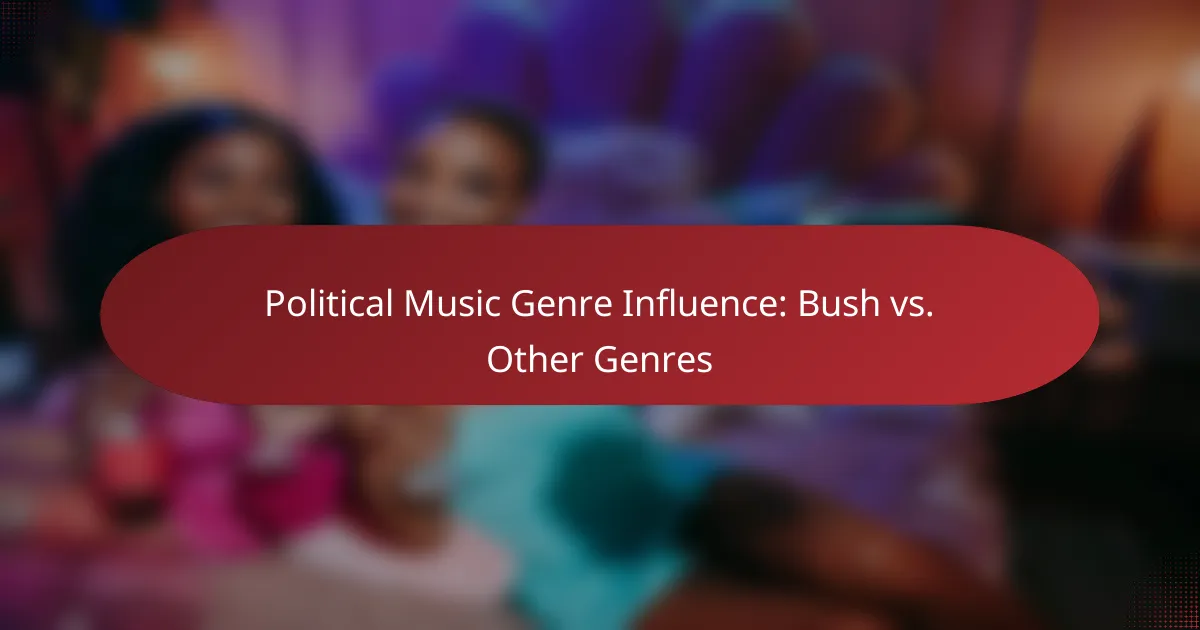George W. Bush’s presidency catalyzed a significant shift in political music perception in the United States, leading to an emergence of protest songs that critiqued his policies, particularly regarding the Iraq War. The media played a crucial role in amplifying these artistic expressions, shaping public perception and providing a platform for both dissent and support. This era was characterized by a diverse array of political songs that mirrored the nation’s polarized sentiments, as artists sought to engage with the pressing issues of the time.
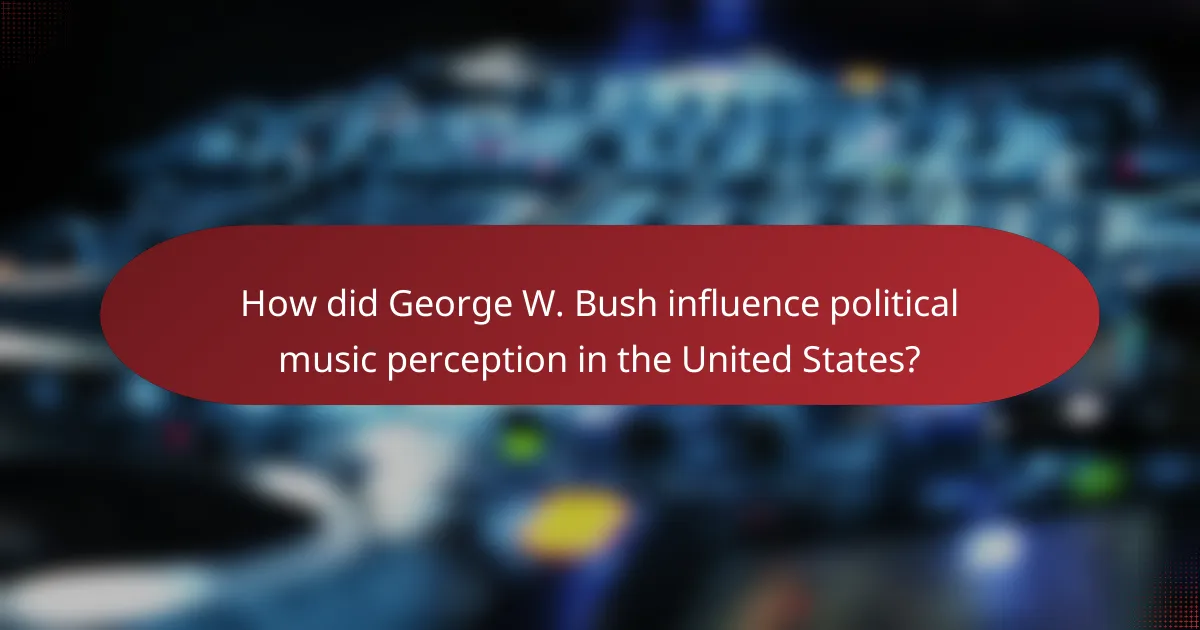
How did George W. Bush influence political music perception in the United States?
George W. Bush’s presidency significantly shaped political music perception in the United States by inspiring a wave of protest songs and politically charged lyrics. His policies, particularly regarding the Iraq War and domestic issues, prompted artists to express dissent and critique through their music.
Impact of Bush’s presidency on music themes
During Bush’s presidency, music themes shifted towards activism and social critique, reflecting public sentiment about war and governance. Artists began to incorporate more explicit political messages in their work, often addressing issues like civil liberties, foreign policy, and economic inequality.
This era saw a rise in genres such as punk, hip-hop, and folk music that emphasized protest and resistance. The emotional weight of the events during this time, including 9/11 and subsequent military actions, fueled a creative response that resonated with many listeners.
Notable artists responding to Bush’s policies
Several prominent artists emerged as vocal critics of Bush’s policies, using their platforms to advocate for change. Musicians like Green Day, with their album “American Idiot,” and Eminem, through tracks like “Mosh,” directly addressed the political climate and mobilized their audiences.
Other notable figures included Bruce Springsteen, who infused his music with themes of working-class struggles and disillusionment, and the Dixie Chicks, who faced backlash for their outspoken criticism of the Iraq War. These artists not only influenced public opinion but also sparked conversations about the role of music in political discourse.

What role did media play in shaping political music during Bush’s presidency?
Media played a significant role in shaping political music during George W. Bush’s presidency by amplifying artists’ messages and influencing public perception. The coverage of political music trends and the impact of television and radio created a platform for artists to express dissent and support for various policies.
Media coverage of political music trends
Media coverage of political music trends during Bush’s presidency was extensive, with outlets frequently highlighting songs that critiqued his administration. Major news networks and music publications often featured artists like Green Day and Bruce Springsteen, who used their music to address issues such as the Iraq War and civil liberties.
This coverage not only elevated the visibility of politically charged music but also shaped public discourse around these topics. As a result, songs that might have gone unnoticed gained traction, influencing listeners’ perceptions of both the music and the political climate.
Influence of television and radio on music perception
Television and radio played crucial roles in shaping how political music was perceived during this era. Programs like Saturday Night Live and various talk shows featured politically charged performances, bringing these messages into mainstream culture. This exposure helped normalize political commentary in music, making it more accessible to a broader audience.
Radio stations also contributed by playing protest songs, which resonated with listeners disillusioned by the political landscape. The combination of visual and auditory media created a powerful narrative that framed political music as a vital form of expression during Bush’s presidency.
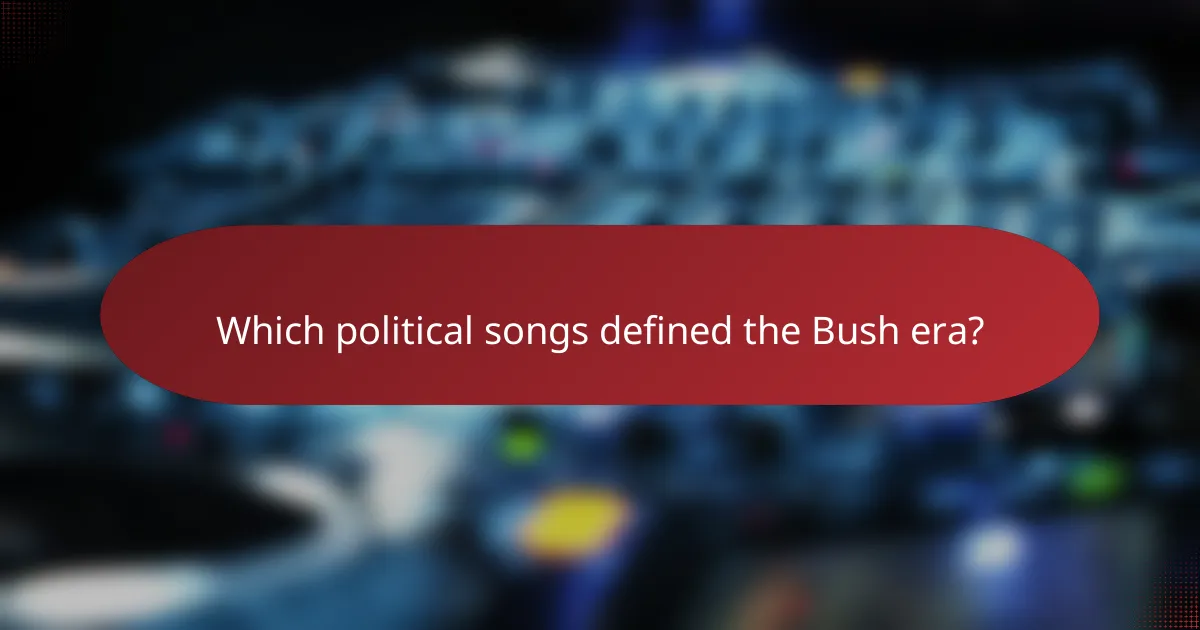
Which political songs defined the Bush era?
The Bush era was marked by a diverse range of political songs that both critiqued and supported the administration’s policies. Key tracks from this period reflect the polarized political landscape, with artists using their music to express dissent or rally support for the president’s initiatives.
Key songs critiquing Bush’s administration
Several songs emerged as powerful critiques of George W. Bush’s presidency, particularly focusing on the Iraq War and domestic policies. Notable tracks include “American Idiot” by Green Day, which expressed frustration with American politics and culture, and “Bush Was Right” by the band Anti-Flag, which criticized the administration’s decisions.
These songs often resonated with younger audiences and became anthems for protests. The lyrics highlighted issues such as civil liberties, war, and social justice, encouraging listeners to question the status quo and engage in political activism.
Popular anthems supporting Bush’s policies
Conversely, some songs celebrated George W. Bush’s policies, particularly during times of national crisis. “Courtesy of the Red, White and Blue” by Toby Keith became a rallying cry after the September 11 attacks, emphasizing patriotism and support for the military.
These anthems often appealed to conservative audiences, reinforcing a sense of national pride and unity. They were frequently played at political rallies and events, helping to bolster the administration’s image during its tenure.
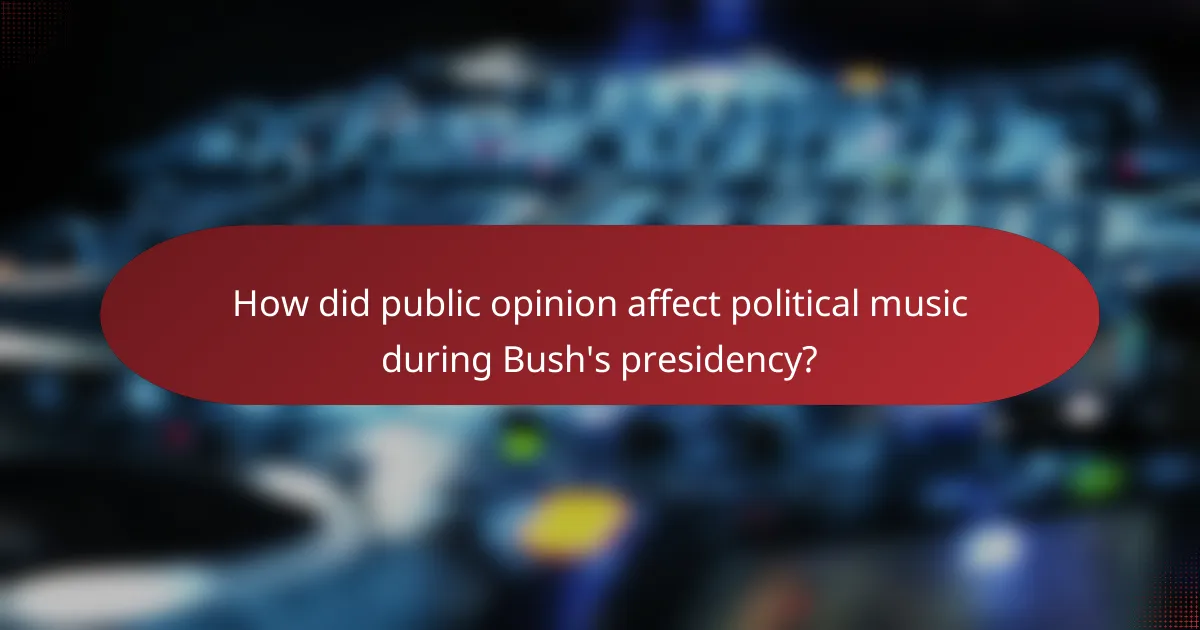
How did public opinion affect political music during Bush’s presidency?
Public opinion significantly influenced political music during George W. Bush’s presidency, as artists often used their platforms to express dissent or support based on prevailing sentiments. The response to events like the Iraq War and domestic policies shaped the themes and popularity of various musical genres.
Shifts in public sentiment reflected in music
As public sentiment shifted, so did the music that resonated with listeners. Early in Bush’s presidency, patriotic songs were prevalent, reflecting post-9/11 unity. However, as discontent grew over the Iraq War, genres like punk and hip-hop began to dominate, featuring lyrics that criticized government actions and called for accountability.
Artists such as Green Day and Eminem became prominent voices of dissent, using their music to articulate frustrations. This shift illustrated how political music adapted to the changing landscape of public opinion, often mirroring the collective mood of the populace.
Impact of protests and movements on musical expression
Protests and social movements played a crucial role in shaping musical expression during Bush’s presidency. The anti-war movement, in particular, inspired a wave of songs that addressed issues of war, peace, and justice. Concerts and festivals often became platforms for political messages, with musicians encouraging activism through their performances.
For example, events like the “Vote for Change” tour in 2004 brought together various artists to promote voter participation and express opposition to Bush’s policies. This collaboration between music and activism highlighted the power of music as a tool for social change, influencing both public opinion and political discourse.
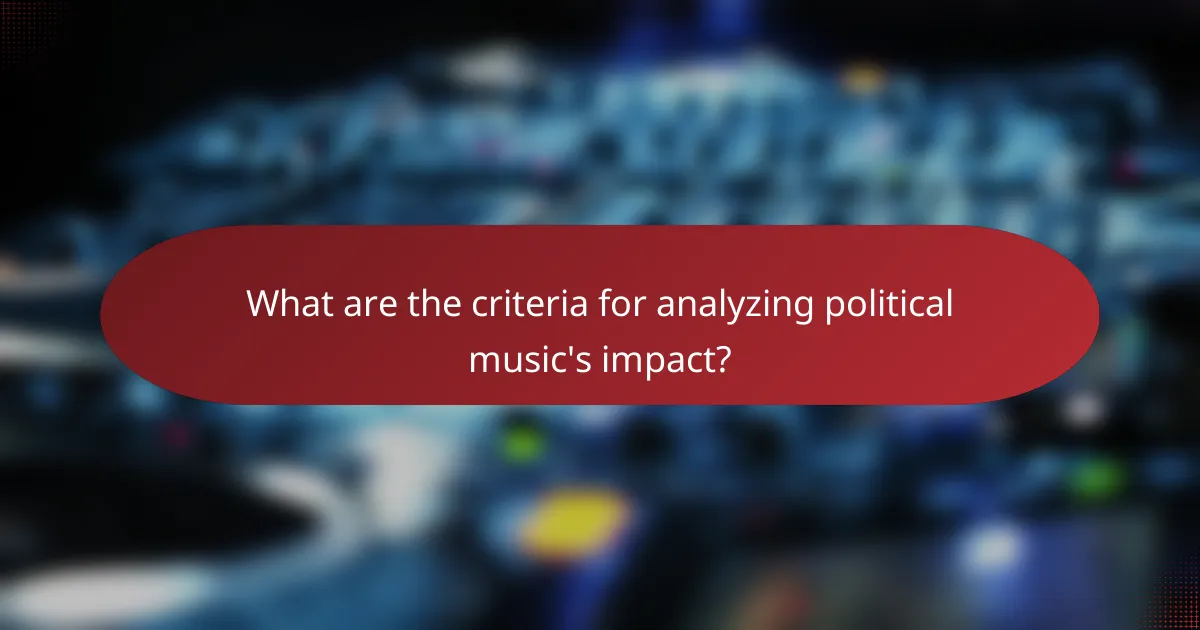
What are the criteria for analyzing political music’s impact?
Analyzing political music’s impact involves assessing its cultural resonance, emotional appeal, and ability to mobilize audiences. Key criteria include lyrical content, public reception, and the broader socio-political context in which the music is released.
Framework for evaluating political music
A solid framework for evaluating political music should consider the historical context, the artist’s intent, and the audience’s response. Understanding the time period and events surrounding the music can provide insight into its significance and influence.
Additionally, analyzing the lyrics for themes of activism, protest, or commentary can reveal how effectively the music communicates its message. Audience engagement, such as concert attendance or social media interactions, also plays a crucial role in assessing impact.
Key metrics for measuring influence
To measure the influence of political music, consider metrics such as chart performance, streaming numbers, and social media engagement. High chart rankings or millions of streams can indicate a strong connection with listeners.
Another important metric is the frequency of covers or references in other media, which can demonstrate the music’s lasting impact. Surveys or polls gauging public opinion on the issues addressed in the music can also provide valuable insights into its effectiveness.
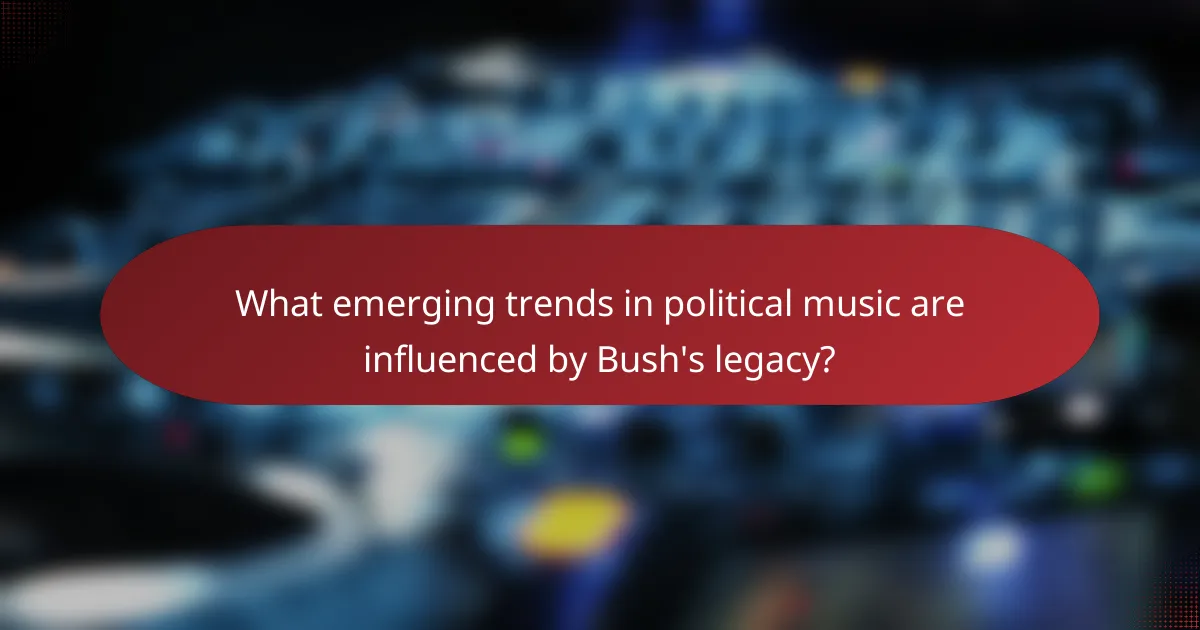
What emerging trends in political music are influenced by Bush’s legacy?
George W. Bush’s presidency has significantly shaped political music, leading to a resurgence of protest songs and politically charged lyrics. Artists today often draw on themes from his era, reflecting societal issues and political discontent through their music.
Current artists drawing inspiration from Bush’s era
Many contemporary musicians cite the political climate during Bush’s presidency as a catalyst for their work. Artists like Green Day and Rage Against the Machine have seen renewed interest, with their songs addressing themes of war, inequality, and government accountability. Newer artists, such as Hozier and Billie Eilish, continue this trend by incorporating social commentary into their lyrics, resonating with younger audiences.
Additionally, hip-hop artists like Kendrick Lamar and J. Cole often reference the socio-political landscape shaped by Bush, using their platforms to critique systemic issues and advocate for change. This blend of genres showcases a diverse approach to political music that reflects ongoing societal challenges.
Evolution of political music in the digital age
The digital age has transformed how political music is created and consumed, allowing for rapid dissemination of messages. Platforms like Spotify and YouTube enable artists to reach global audiences instantly, amplifying their political messages far beyond traditional media. This accessibility has led to a rise in grassroots movements, where music serves as a rallying cry for social justice and political activism.
Moreover, social media plays a crucial role in shaping political music trends. Artists can engage directly with fans, fostering a community around shared values and political beliefs. This interaction often leads to collaborative projects that blend music with activism, creating a powerful force for change in society.
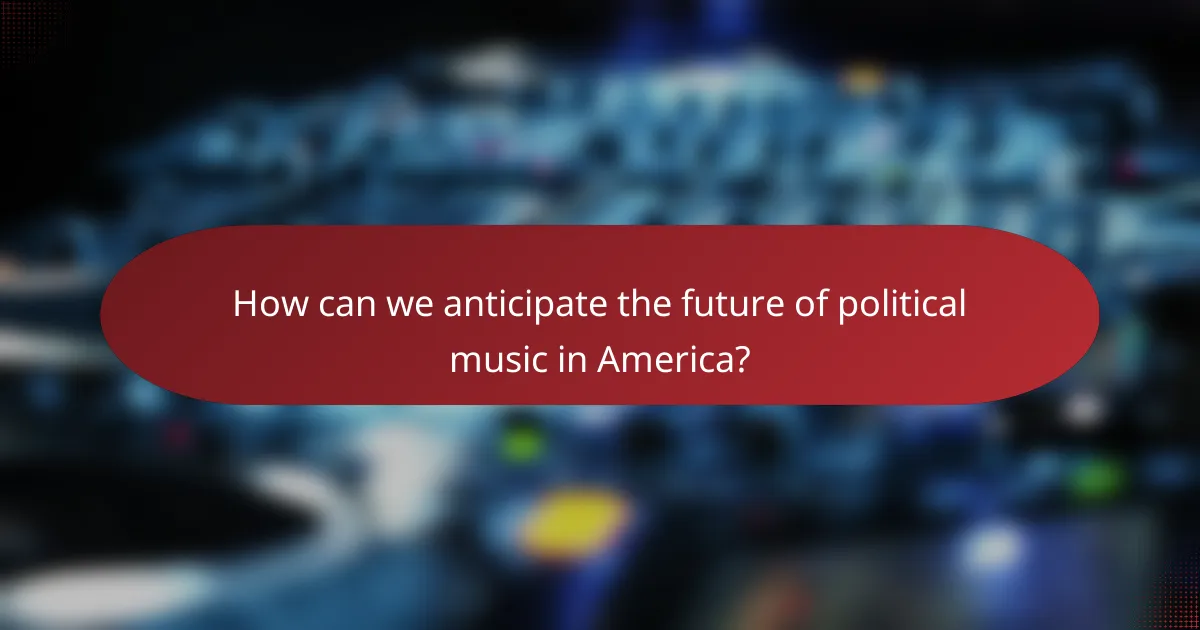
How can we anticipate the future of political music in America?
The future of political music in America is likely to be shaped by evolving social dynamics, technological advancements, and shifting cultural values. As artists respond to current events and public sentiment, the themes and mediums of political music will adapt to resonate with new audiences.
Predicted shifts in political themes
Political music is expected to increasingly reflect contemporary issues such as social justice, climate change, and economic inequality. Artists may focus on grassroots movements and personal narratives, making the music more relatable and impactful for listeners.
Additionally, the rise of intersectionality in social movements will influence song lyrics and themes, encouraging a broader representation of voices and experiences. This shift could lead to collaborations across genres, blending traditional political messages with diverse musical styles.
Role of social media in shaping future political music
Social media will play a crucial role in the dissemination and popularity of political music. Platforms like TikTok and Instagram allow artists to share their work quickly, enabling viral trends that can amplify political messages to vast audiences.
Moreover, social media facilitates direct interaction between artists and fans, creating a feedback loop that can influence the direction of political music. Artists may adapt their content based on audience reactions, leading to more dynamic and responsive political commentary in their songs.
